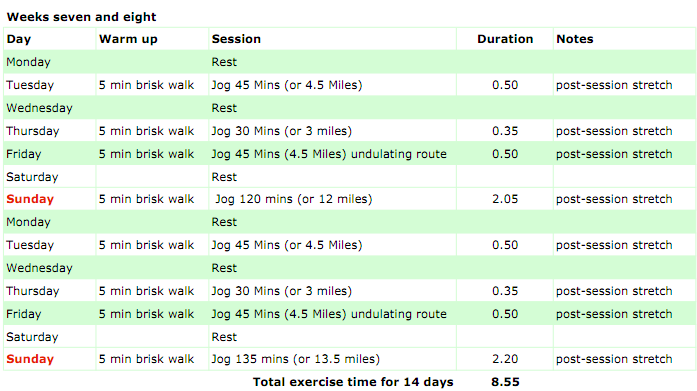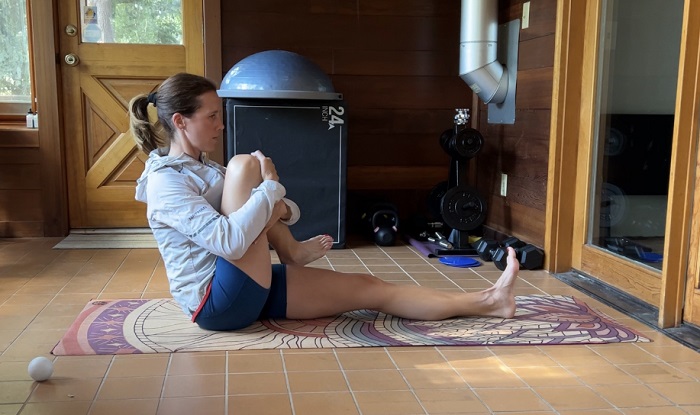How to Make Your Own Running Training Plan: 5K to Marathon
Create a personalized running training plan by determining your current fitness level and setting specific goals. Start with shorter distances like 5K before working your way up to longer races like a marathon.
Running is a fantastic way to improve your fitness level, lose weight, and boost your mental health. Whether you are a beginner or an experienced runner, having a structured training plan is essential to progress safely and efficiently. By customizing your own plan, you can tailor your workouts to suit your own abilities, schedule, and goals.
In this guide, we will provide you with a simple and effective framework to help you create your own running training plan from the 5K distance to a full marathon race.
Set Your Running Goals
In order to achieve success in your running journey, it is crucial to set clear and achievable goals. Setting your running goals not only provides direction and motivation but also helps tailor your training plan to meet your specific objectives.
Assess Your Current Fitness Level
Before setting your running goals, it’s essential to assess your current fitness level. This evaluation will give you a clear understanding of where you currently stand and what areas need improvement. Consider factors such as your current mileage, pace, endurance, and any previous running experience. This assessment will help you set realistic and attainable running goals.
Choose A Race Distance
When setting your running goals, it’s vital to choose a race distance that aligns with your fitness level and aspirations. Whether you’re aiming for a 5K, 10K, half marathon, or marathon, selecting an appropriate race distance provides a specific target to work towards. This decision will influence the intensity and duration of your training plan, ensuring it is tailored to your chosen race distance.

Credit: training.smashrun.com
Determine Your Training Schedule
Assess your daily schedule to determine how much time you can dedicate to your running training. Find the best time slots that fit your routine.
Choose how many days per week you can commit to running to achieve your desired distance goal. Plan your running days strategically.
Design Your Training Plan
Include Different Types Of Runs
Incorporate variety to prevent boredom and work different muscles.
Gradually Increase Mileage
Important to avoid overtraining and reduce injury risk.
Incorporate Cross-training And Strength Training
To create a comprehensive running training plan, it’s important to incorporate cross-training and strength training. Not only will this improve overall fitness and performance, but it will also help prevent injuries and enhance endurance.
Incorporating cross-training and strength training into your running plan can enhance your overall performance, prevent injuries, and provide a well-rounded approach to your fitness regimen. Integrating these elements will help you become a stronger and more resilient runner, improving your speed, endurance, and agility. Here’s a closer look at the benefits of cross-training and effective tips for strength training that you can incorporate into your running training plan.Benefits Of Cross-training
Cross-training offers numerous advantages for runners, such as minimizing the risk of overuse injuries, improving cardiovascular fitness, and enhancing overall muscle balance. It allows you to engage in activities other than running, such as swimming, cycling, or yoga, which work different muscle groups while giving your running muscles a chance to recover. By diversifying your workouts, you can strengthen your body’s overall fitness, leading to a more holistic approach to your training.Tips For Effective Strength Training
| Tips for Effective Strength Training | |————————————–| | 1. Prioritize compound exercises, such as squats, lunges, and deadlifts, to target multiple muscle groups simultaneously. | | 2. Incorporate plyometric exercises, such as box jumps and medicine ball throws, to improve explosive power and agility. | | 3. Focus on proper form and technique to prevent injuries and maximize the effectiveness of your strength training workouts. | | 4. Include both upper and lower body exercises to ensure balanced strength development throughout your entire body. | | 5. Gradually increase the intensity and resistance of your strength training exercises as your overall fitness and strength improve. | By incorporating these tips into your strength training routine, you can build a solid foundation of strength and power that will directly translate to improved running performance. By integrating both cross-training and strength training into your running plan, you can enjoy a well-rounded approach to your fitness regimen. Embracing the benefits of these supplementary activities will not only enhance your running performance but also contribute to a durable and resilient physique, reducing your susceptibility to common running injuries.Monitor Your Progress And Make Adjustments
Monitoring your progress and making adjustments is an essential part of any effective running training plan. It’s important to keep track of your runs and mileage, as well as listen to your body’s signals. By staying proactive and adaptable, you’ll be able to optimize your training and achieve your running goals. Let’s explore two crucial aspects of monitoring and adjusting your training plan.
Track Your Runs And Mileage
Tracking your runs and mileage allows you to have a clear overview of your performance and progress. To ensure accurate tracking, consider using a running app or GPS watch to record key metrics like distance covered, time taken, and pace. These tools can provide valuable insights and make it easier to analyze your data.
Additionally, it’s helpful to maintain a training log or spreadsheet where you can jot down your run details. Having this information readily available enables you to look back on past runs, identify patterns, and set goals for future sessions. By consistently monitoring your runs and mileage, you’ll have a solid foundation for adjusting your training plan.
Listen To Your Body
While tracking your runs and mileage is important, it’s equally crucial to listen to your body’s signals. Pay attention to any aches, pains, or signs of fatigue that may indicate overtraining or the need for recovery. Ignoring these signals can lead to injuries and setbacks in your training.
Remember, rest and recovery play a vital role in the overall success of your running plan. Be mindful of how your body feels after each run and make adjustments accordingly. This may involve scheduling rest days, incorporating active recovery activities like stretching or cross-training, or modifying the intensity of your workouts.
Balancing your training with adequate rest and recovery will help prevent burnout and keep you on track toward achieving your running goals.

Credit: www.amazon.com

Credit: p3r.org
Frequently Asked Questions For How To Make Your Own Running Training Plan: 5k To Marathon
How Do I Create A Running Training Plan For A 5k Race?
Creating a running training plan for a 5K race starts with setting a goal, assessing your current fitness level, and gradually increasing your mileage and intensity over time. Incorporate speed workouts, rest days, and cross-training to improve your performance.
What Should I Include In My Marathon Training Plan?
In your marathon training plan, include a mix of long runs, speed work, tempo runs, and cross-training. Gradually increase your mileage, practice fueling and hydration strategies, and incorporate strength training to build endurance and prevent injuries.
How Often Should I Update My Running Training Plan?
Update your running training plan every 4-6 weeks to ensure progress and prevent plateaus. Evaluate your performance, adjust your goals if needed, and make necessary changes to your mileage, intensity, and workouts based on your body’s needs and feedback.
Conclusion
Creating a personalized training plan is essential for reaching your running goals. By following the principles of gradual progress, proper rest, and individualization, you can develop a plan that suits your needs. With consistency and dedication, you can progress from a 5K to a marathon, achieving success in your running journey.







